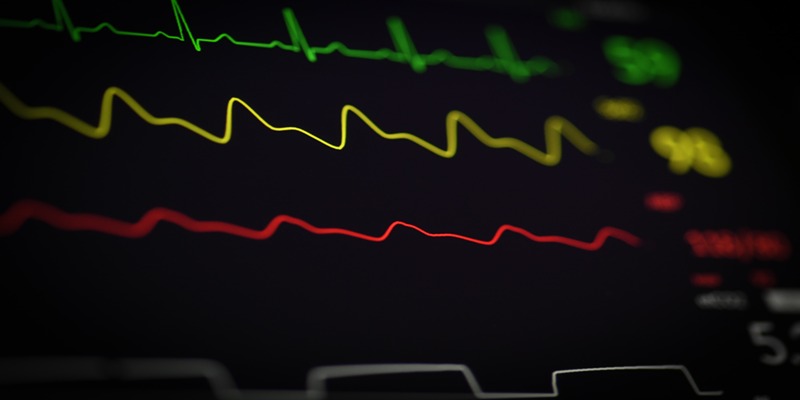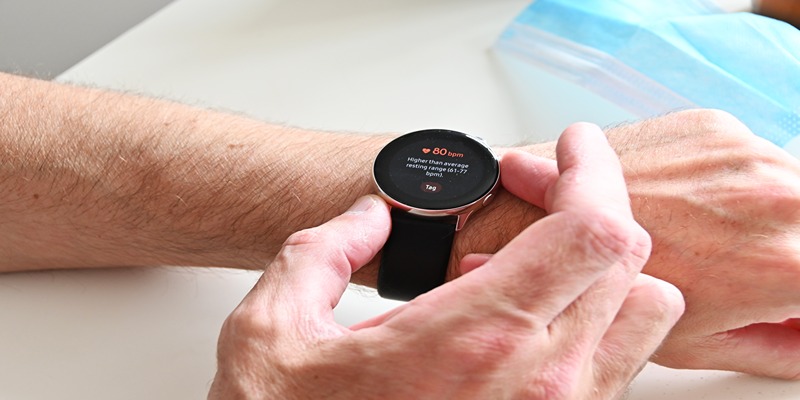Recognizing the Warning Signs: Mild to Mini Stroke Symptoms
Oct 06, 2023 By Nancy Miller
The timely response to a stroke is of utmost importance, since every moment is critical. The ability to identify the first indicators may significantly impact the speed of recuperation, the extent of long-lasting harm, and in extreme cases, survival. Strokes exhibit no bias based on age, gender, or race, and the severity of their symptoms may vary. However, it is important to note that strokes may be classified into many categories, each exhibiting distinct symptoms. It is vital to comprehend the contrasts between moderate strokes and "mini" strokes. The primary objective of this article is to provide insight into the aforementioned symptoms, with a particular emphasis on the significance of raising awareness and taking prompt action.
Key Stroke Symptoms to Be Aware Of
1. Sudden Numbness or Weakness
A prominent indicator of a stroke is the abrupt manifestation of sensory loss or muscular impairment, predominantly affecting one side of the body. This condition has the potential to impact the facial region, as well as the upper extremities or lower extremities. It is fairly unusual for individuals who are undergoing a stroke to see a unilateral facial droop or have difficulty in lifting one arm relative to the other. The observed asymmetry may be attributed to the stroke's differential effect on one hemisphere of the brain relative to the other. The prompt identification of these signs is crucial. In the event that an individual or another person encounters these symptoms, it is essential to promptly take action and seek medical intervention.

2. Difficulty with Speech and Understanding
Speech abnormalities might serve as a prominent symptom of a stroke. Individuals may have challenges in articulating words, experiencing speech impairment characterized by slurred speech, or encountering difficulties in processing auditory input from others. Occasionally, individuals may have an awareness of the issue and convey feelings of aggravation, yet on other occasions, they may seem to be unaware. This phenomenon may be attributed to potential impairments in the cerebral regions associated with linguistic processing and comprehension. The act of inquiring basic questions and assessing the coherence of answers by onlookers is of utmost importance, since prompt recognition has the potential to significantly impact the consequences of stroke.
3. Severe Headache Without Known Cause
The manifestation of a sudden and severe headache, often characterized as the most severe encountered, may serve as an indication of a hemorrhagic stroke. In contrast to tension or migraines, these headaches develop suddenly and without discernible causes. These symptoms may be accompanied by dizziness, blurred vision, or even syncope. It is essential to distinguish these headaches from conventional ones, given their much graver ramifications. The prompt and timely provision of medical care is of utmost importance. It is advisable to consistently emphasize exercising caution in situations when an individual presents with a sudden and intense headache, especially if they do not have a previous medical record of experiencing similar symptoms. In such cases, it is recommended to promptly seek emergency medical attention.
4. Trouble with Vision in One or Both Eyes
A stroke may present as a sudden disruption in visual perception, impacting either a single eye or both eyes simultaneously. Individuals may potentially encounter visual impairments such as blurred vision, darkened visual perception, or even diplopia. In some instances, individuals may experience a perceptual phenomenon characterized by the perception of a "curtain" descending over their visual field, resulting in a constriction or obstruction of their ability to see. This phenomenon arises as a consequence of the stroke impacting the cerebral regions responsible for visual processing. The act of acquiring a pair of glasses should not be seen as a simple gesture, but rather as a significant indicator that needs prompt and careful consideration. Taking prompt intervention may effectively reduce the occurrence of long-term vision impairments or other issues.

5. Loss of Balance or Coordination
Strokes may also have an influence on the cerebral areas important for maintaining balance and coordination, resulting in impaired motor function characterized by unsteady movements or abrupt episodes of dizziness. This may present as challenges in ambulation, unsteady gait, or an incapacity to successfully perform a finger-to-nose test upon request. Certain individuals may potentially have an abrupt impression of rotation, perceiving a disorienting perception akin to a tilting of their surroundings. The absence of coordination is not only a little nuisance; rather, it serves as a significant indicator of potential issues. In the event that an individual exhibits abrupt instability or demonstrates indications of compromised coordination, it is essential to promptly identify these manifestations as possible indicators of a stroke and promptly pursue urgent medical attention.
Distinguishing Between Mild Stroke Symptoms and Mini Stroke Symptoms
Characteristics of Mild Stroke Symptoms
The symptoms of a mild stroke, while less severe compared to those of a massive stroke, nonetheless suggest cerebral ischemia, a condition characterized by insufficient blood supply to a specific region of the brain. Potential symptoms may manifest as modest weakness in either an arm or leg, slight numbness on a single side of the body, or small impairments in speaking. Although the aforementioned symptoms may be considered less severe in contrast, it is important not to disregard their significance. The duration of their existence may be extended, perhaps serving as an indicator of an imminent significant cerebrovascular event. It is crucial to bear in mind that even little symptoms indicate a significant occurrence inside the brain. The prompt emphasizes the need of promptly recognizing and addressing medical conditions in order to mitigate potential harm. It underscores the significance of treating such conditions seriously and seeking professional medical assistance, even if they seem to spontaneously resolve.
Recognizing the Signs of a Mini Stroke
Early symptoms of a mini stroke often are usually taken as the warning sign, hinting at a potential future stroke. The symptoms of a TIA closely mirror those of a full-blown stroke but typically last only a short period, often less than an hour, before disappearing. What sets a TIA apart is its transient nature: its symptoms resolve without lasting damage. However, it's a mistake to dismiss a TIA just because symptoms fade. A TIA is often a precursor to a more severe stroke in the future. Therefore, recognizing and addressing the signs of a mini stroke is essential, as timely intervention can significantly reduce the risk of a subsequent, potentially debilitating, stroke.
Conclusion
The recognition and comprehension of stroke symptoms, ranging from mild to severe, extend beyond a mere acquisition of information, as they possess the ability to save lives. During critical situations when time is of the essence, being cognizant might be the determining factor between prompt action and irreparable harm. Through maintaining a state of vigilance, individuals are able to not only prepare themselves to respond immediately, but also assume a vital role in the interconnected network of providing care for others. Strokes possess the potential to manifest abruptly and inflict severe consequences. However, via expeditious identification and quick medical intervention, the adverse effects of strokes may be alleviated. It is imperative that we place a high importance on our own health and the welfare of people in our vicinity by maintaining a state of awareness and preparedness to take appropriate action.
-
 Food Oct 08, 2023
Food Oct 08, 2023Steering Clear: Foods and Drinks to Avoid When You Have Arthritis
Did you know you should avoid processed red meat and coffee if you have arthritis? Learn more in this read!
-
 Fitness Oct 10, 2023
Fitness Oct 10, 2023The Essential Role of Endorphins in Our Bodies
Learn about the role and primary functions of endorphins and the Influence of External Stimuli on Endorphin Levels in this read.
-
 Condition Nov 20, 2023
Condition Nov 20, 20238 Natural Ways to Relieve Stress: An Ultimate Guide
Look into natural ways to relieve stress that work. Improve your sleep and exercise in your daily routine for a balanced life
-
 Condition Feb 20, 2024
Condition Feb 20, 2024Narcolepsy: Genetic? Sleep Experts on Inheriting Chronic Disorder
Is narcolepsy a condition that runs in your family? After seeing someone else's sudden onset of drowsiness, have you ever questioned whether or not you may be at risk for developing sleep paralysis yourself? The question of whether or not narcolepsy is a genetic condition or the consequence of environmental circumstances is still being investigated by scientists
